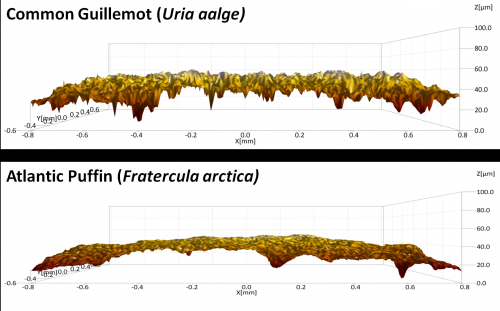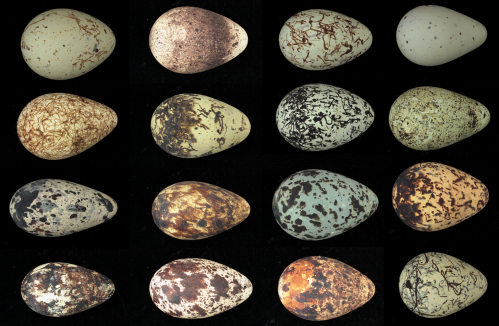Unique shell design gives guillemot eggs an edge for living on the edge

Unique nano-structures on guillemot eggshells eggs enable them to survive precarious habitats, on exposed cliffs with no nest. A new study, to be presented at the Society for Experimental Biology meeting in Valencia on July 5, shows how these structures act as self-cleaning guardians of the eggs, preventing them from falling and protecting them from salt and guano exposure.
The team of researchers headed Dr Steven Portugal (Royal Veterinary College, University of London) discovered the nano-scale cone-like structures.
Dr Steven Portugal explained: "This work was started by accident. A water spillage over an egg collection revealed how differently water droplets acted on the guillemot eggshells in comparison to other species. The water droplets stayed as a sphere on the eggs, typically an indication of a hydrophobic surface."
The researchers identified that these structures are unique to guillemot eggshells in a comparative study of over 400 species in total, including those nesting in similar environments, and those closely related to the guillemots.
They performed engineering tests on the eggshells and found that those of the guillemot have several unique proprieties due to these nano -structures: higher water contact angle (which means they were more hydrophobic), rougher surface (which helps prevent the egg from falling off the cliff or the parents feet) and higher rate of gaseous exchange (which helps them cope with the high salt content from the sea spray).

Other analogous hydrophobic nano-structures have been identified in the Lotus Leaf, and have been mimicked in industry. The researchers expect this finding will also have important uses in the emerging field of biomimetics.

Guillemots are famous for the egg shapes. They nest on exposed cliff faces (no nests), in colonies which can consist of hundreds of thousands of individuals, really packed in. Their eggs are shaped so that when knocked or rocked, they go around in a perfect circle on their own axis, so they don't roll off the cliff.
More information: This work will be presented at 14:40 on Friday 5th July 2013.
Provided by Society for Experimental Biology














.jpg)





